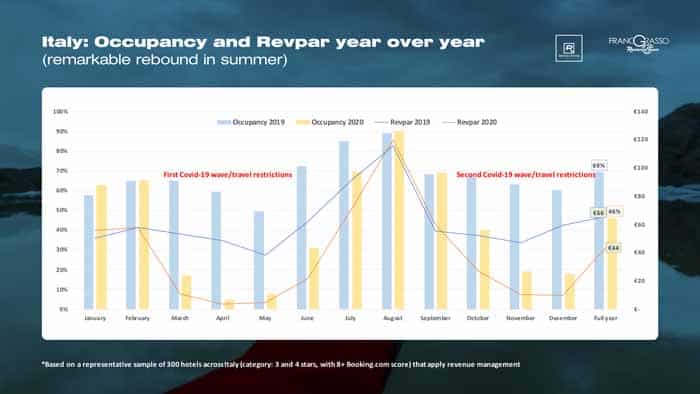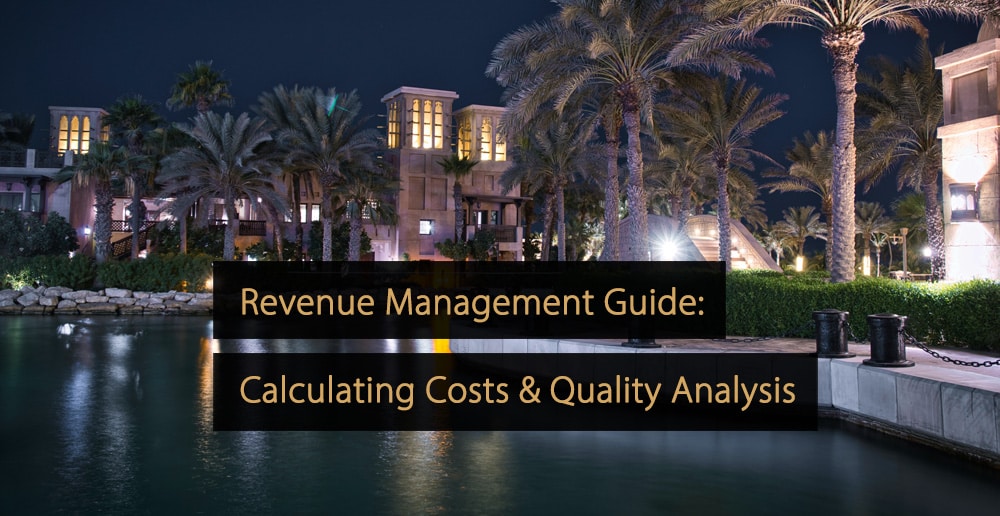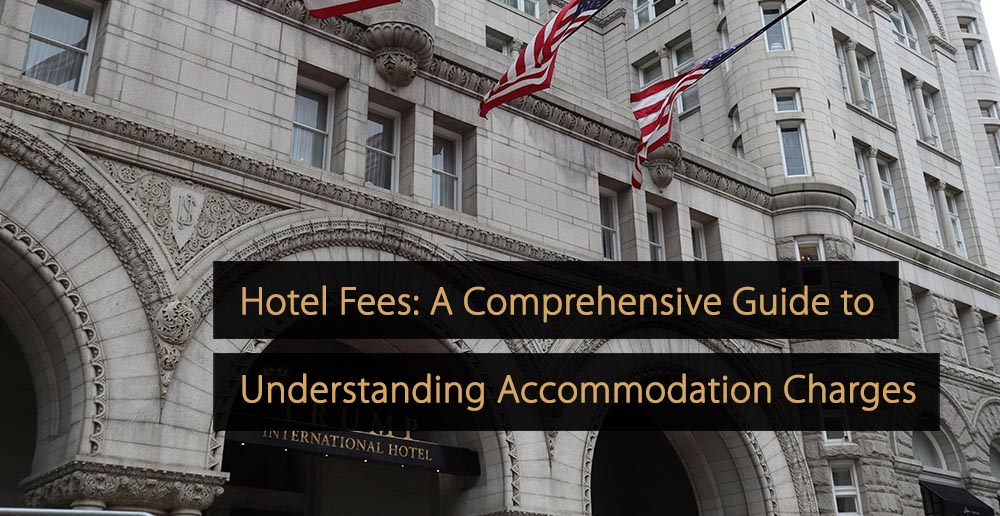Profitability is a business’s ability to generate earnings from its operations over a given period. Various methods, known as profitability ratios, gauge a business’s overall profitability. This article explains the different profitability ratios and explains how revenue management can positively impact profitability.
Insight in Profitability Ratios
Profitability ratios provide insight into how a business is performing and are key tools for accurately analyzing financial statements. Every business owner should know what these parameters represent and how they are calculated since they are scrutinized closely, particularly when dealing with banks.
3 Main Profitability Ratios
Let us now review 3 widely known examples of profitability ratios:
1. ROI (Return on Investment)
The first ratio, ROI (Return on Investment), measures the profitability of a business’s invested capital. Invested capital consists of net working capital plus fixed assets. This index is critical for business owners, as it is a useful metric to determine how much a business earns from its invested capital (owned and borrowed). To calculate ROI, a business’s operating income (or operating earnings) is divided by its invested capital, and the resulting number is multiplied by 100 to express ROI as a percentage.
ROI = (Operating Income / Invested Capital) x 100
2. ROE (Return on Equity)
The second ratio, ROE (Return on Equity), measures the overall profitability of assets invested by a business owner or shareholder in the form of equity or risk capital. As this ratio reflects the return on risk capital, it goes without saying that ROE should be at least equal to or higher than the return on government bonds.
ROE = (Annual Net Income / Net Equity) x 100
3. ROS (Return on Sales)
The third ratio is ROS (Return on Sales), and it is used to measure the average profitability of a business in relation to its sales revenue. This metric is useful to measure how a business performs compared to its competitors of similar size within the same sector, and it is also expressed as a percentage. It is obtained using the following formula:
ROS = (Operating Profit / Net Sales) x 100
The ROS ratio is critically important since it measures the average profit margin a business achieves from its earnings – before taxes and financial expenses – which provides valuable insight into how its core business operations are being managed.
For example, if the average profit margin for competitors in the same sector is 10% and the business being analyzed has a ROS ratio of 4%, this would suggest that there might be serious issues ranging anywhere from product pricing to sales channels or production costs.
How to Measure Hotel Profitability?
From a hotel perspective, the first two ratios would require in-depth knowledge of a business’s financial position, particularly concerning investments (namely, invested capital for ROI and net equity for ROE).
Also, because the factors used to calculate these ratios are specific to every single business, they can be misleading when used as generic benchmarks for other businesses in the same industry.
As previously explained, a more appropriate ratio to assess hotel profitability is ROS (Return on Sales), which shows the average profit margin.
Since successful revenue management strategies focus on maximizing sales and profit – the two main factors of the ROS equation – we consider this ratio a suitable starting point to analyze hotel performance.
ROS vs. EBITDAR/EBITDA
ROS can be compared to EBITDAR (Earnings Before Interest, Taxes, Depreciation, Amortization, Rent costs), more broadly known as Gross Operating Profit (GOP), and EBITDA (Earnings Before Interest, Taxes, Depreciation and Amortization). This profitability ratio shows a business’s earnings solely based on its normal operations, before interests, taxes, depreciation, amortization, and after-rent costs (if the company does not own the hotel).
EBITDA is essentially a metric indicating how much money is available to a business owner or hotel company to cover any costs unrelated to normal business operations, such as interest, taxes, etc. and secure a profit margin at the same time. The higher the EBITDA, the healthier the business. A negative or low EBITDA would imply that operating costs outweigh revenues and that the business could not be sustainable in the medium- to long term.
Financial analysts are more likely to value a business based on EBITDA rather than solely on profit, as it presents a more straightforward picture of whether said business can produce profit through the management of ordinary operations, thus discounting accounting maneuvers (such as amortization and provisions, or financial management) which do not always accurately reflect a business’s operating performance.
To summarize: EBITDA = Revenue – Expenses (excluding tax, interest, depreciation and amortization)
EBITDA can be calculated by examining a business’s balance sheet, or it can be forecasted.
To conduct a more accurate analysis of the impact of costs and revenues on total turnover and in the case which corrective actions should be taken and where, all amounts should be segmented into separate cost and revenue centers (i.e., rooms, restaurant, spa, etc.). In this case, for the sake of simplicity, we consider a hypothetical property where rooms are the sole cost and revenue center.
How Revenue Management Can Positively Impact Profitability
The EBIDTA margin is affected by the synergism between numerous interrelated factors, such as:
- Room Revenue (Revenue Management);
- Variable costs *, should be approximately 30% of total sales;
- Fixed costs *, which cannot be easily generalized, as they are contingent on a variety of circumstances. They should not surpass 40/45% of total sales.
*Cost optimization focuses on reducing and rationalizing total costs – fixed and variable – to increase profits (without compromising service quality, of course).
Room Revenue is contingent on the potential attractiveness of the location and the quality and brand reputation of the property itself, on market conditions and the implementation of an effective sales and revenue management strategy.
In properties where Revenue Management is properly implemented, the impact of fixed costs will decrease as overall sales increase, while the percentage of variable costs will most likely increase. However, in absolute terms (which is ultimately what matters most) it will always result in higher EBITDA and, therefore, OPERATING PROFIT.
Practical Example of Increase Due to Revenue Management
Let us now consider a practical example to better understand the concept. Suppose that a property that does not apply revenue management has an annual turnover of 1 million euro.
Assuming that variable costs for this property (i.e. complimentary toiletries, laundry, cleaning costs, utilities, breakfast, booking portal commissions, etc.) account for 30% of room revenue (300,000€) and fixed costs (first of all, staff and rent costs) account for 40% (400,000€), the gross operating profit (operating income minus operating expenses) amounts to 300,000€.
Based on statistics on over 2,000 properties worldwide employing consultancy services of Revenue Team by Franco Grasso, a property implementing revenue management practices can expect a rise in revenue of at least 20% in the first year of application. The question that needs to be answered is “What percentage of this income is profit?” Or, better yet, to what extent will increased costs offset these revenues?
Again, based on statistical data, we can say that as occupancy and room revenues increase by 20% year on year, fixed costs tend to remain stable, while variable costs can be expected to increase between 20% and 30%, depending on several factors.
So, returning to our earlier example, let us assume that the property applying revenue management achieves a turnover of 1.2 million euros (+20% compared to the previous year) and its variable costs rise from 300,000€ to 390,000€ (+30%), while fixed costs remain stable at 400,000€. Thus, revenue management strategies will increase the gross operating margin equal to 110,000€ (200,000-90,000€), corresponding to a percentage increase of +37%.
Therefore, by applying revenue management, even if variable costs increase by a larger percentage compared to revenues, in absolute terms, they will have a lesser impact than revenues, resulting in a higher EBITDA (and, therefore, earnings).
This process can be extended to a unitary basis (per available/occupied room). Usually, unitary KPIs are considered alongside occupancy, such as ADR (average daily rate), Revpar (Revenue per available room), Trevpar (Total revenue per available room), Costpar (Cost per available room), Goppar (Gross operating profit per available room) might be used to assess not only one’s own performance, but reliably compare it to other similar hotels, regardless of their number of rooms, or destination’s average. This would allow understanding if a hotel outperforms a relevant benchmark of other hotels.
What stated above about overall absolute values can be reflected in unitary KPIs, so basically, an increase in Revpar by 20%, even if followed by a variable cost per room increase by 30%, might sometimes translate into an incremental Goppar by 40% or more.
This is why revenue management, in normal market conditions, not only increases revenues year over year (and, to a small extent, variable costs) but also, above all, profits.
Revenue Management and Profitability During Crises
However, revenue management is critical even when global crises and travel restrictions make year-over-year growth difficult, if not impossible. In this case, revenue management is still vital to allow hotels to weather the storm, stay afloat, and create the conditions for maximizing results when demand comes back and outperforms competitors.
As described in a previous article we have all seen how revenue management, in conjunction with adequate cost management and optimization measures and marketing strategies, enabled many hotels to achieve break-even or remain profitable in 2020, amid a pandemic.
Statistically speaking, properties can reach or surpass the break-even threshold with an annual occupancy range varying between 40 and 50%, and hotels applying revenue management were able to achieve this, even in 2020 (despite the negative impact caused by the pandemic).
Free Ebook: 10 Things To Know About Revenue Management
This ebook is an introduction to revenue management for executives, general managers and hotel owners. Within the ebook “10 Things To Know About Revenue Management”, you’ll learn the principals of revenue management. Click here to download the Guide "10 Things To Know About Revenue Management".
Insight into profitability ratios helps to better understand the impact of revenue management. This article explained the different ratios, which can help you to better understand and calculate the overall profitability of a business. By using profitability ratios calculations you will learn how revenue management can positively impact profitability.
More Tips to Grow Your Business
Revfine.com is the leading knowledge platform for the hospitality and travel industry. Professionals use our insights, strategies, and actionable tips to get inspired, optimize revenue, innovate processes, and improve customer experience.Explore expert advice on management, marketing, revenue management, operations, software, and technology in our dedicated Hotel, Hospitality, and Travel & Tourism categories.









Leave A Comment